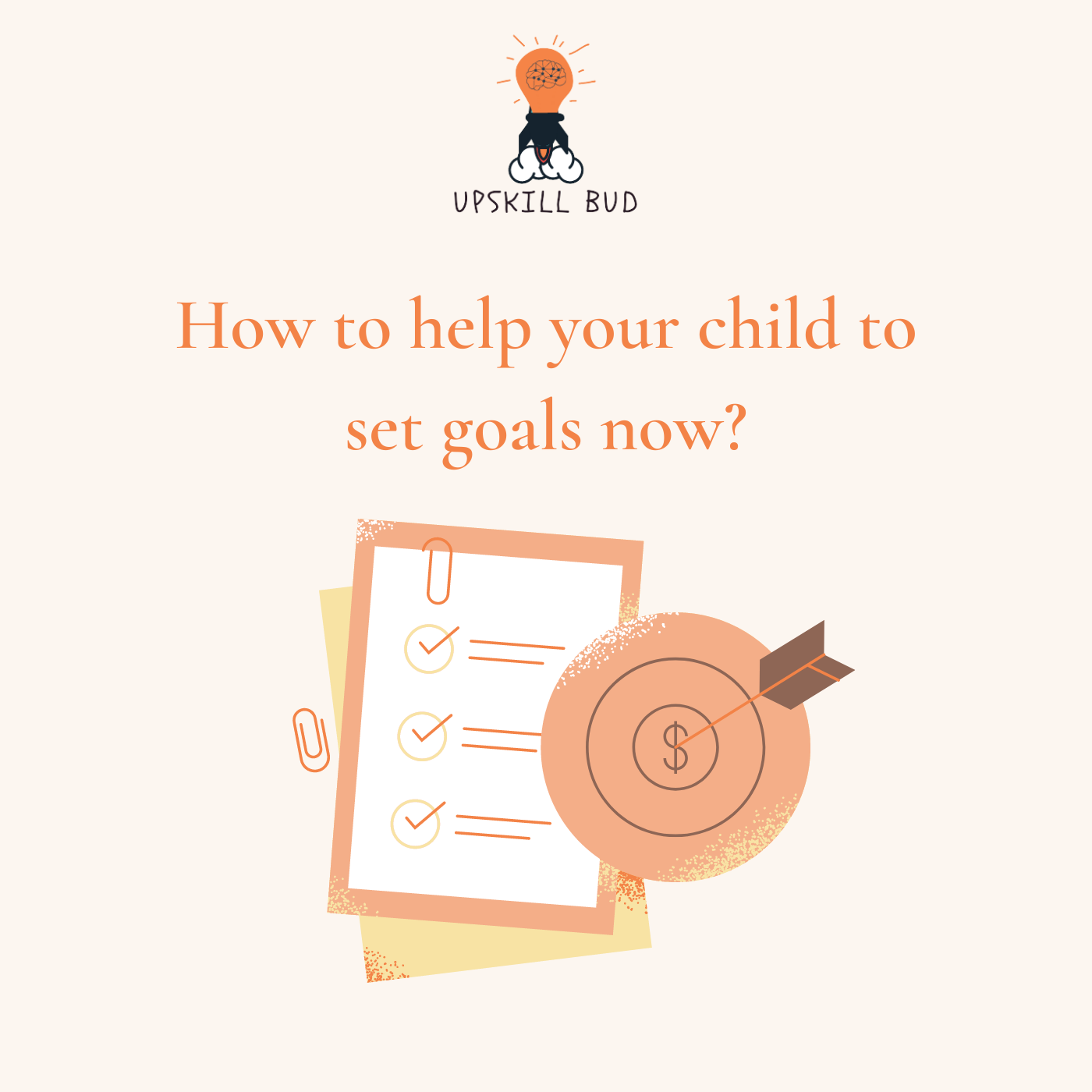
Goal setting – How to help your child to set goals

“The most important thing about motivation is goal setting. You should always have a goal” – Francie Larrieu Smith
We should always have a goal to know where we are headed and then chalk out a plan to achieve that. Teaching them to our kids at a young age will make sure that we set them on a beautiful path of success and happiness.
Setting goals are an important factor and everyone knows it. How do we go about doing this? In this podcast, we tried to compile a few tips and plans that you can execute to make sure; your child has a set goal.
There are 4 simple and easy steps for goal setting. For the kids of all the age groups, the same can be followed. Here are the four steps.
Steps:
Ask them questions
One of the important steps to setting a goal is to start by asking questions. A sample would be what would you like to do today? What would you like to learn this week? Is there something that you would like to achieve today? Their goals might look very small to you, but do not push them. Let them set whatever goals they want. It has to be simple, and tiny. It motivates them to start setting goals. Once they start, you can ask them to plan for a week, for a month, and for older kids, maybe for a year.
Goal topics should be different, as in, please help them categorize the goals. For example, academics, extracurricular goals, sports goals, or any other life skills you want them to develop. Asking the right question for each category will help them find the steps to achieve the goals.
Ask them to write their goals:
According to psychology, writing helps you develop a thought process. Instead of just thinking about a goal, when you write it, you have more clarity. Statistically, writing increases the possibility of achieving the goal by 42%.
There are many goal-setting templates available on many websites. Choose a template that best suits your child. Let them be a part of choosing the template. Once done, take a beautiful color printout and let them write. The whole process will be fun and exciting for the kids. Sit with them when they write these goals, it is important to guide them with the proper steps. Do not set goals for them. Do not write the goals for them. Your task, as parents are to guide them, just to make sure that the goals and step are aligned and are not random. Once done, hang it in someplace where can see and update it regularly.
Plan to achieve your goal:
Now the goal is set, the next step is to plan, how to achieve these goals. “Plan” are the steps that they need to do, to reach these goals. When they write the goals, ask them what is the plan to achieve them. They need to have at least 3 steps that need to be done, every day. It has to be an actionable step. For example, the goal is “I want to be better at playing cricket”. The plan should have 3 steps, for example;
- I will practice bowling for 15 mins every day.
- I will practice batting for 15 minutes, every day.
- I will practice catching the ball for 10 mins every day.
Every day, there has to be something on the checklist that the child can tick off and feel closer to the goal. Help them to these checklists.
Review the goal often:
Check the progress of your goal every month or as often as possible. See if the plans need any changes or improvements. Make changes if necessary. It is important to review the goals to check the direction. The efforts have to produce favorable results right? If, the efforts are not producing the desired results, change the steps, rework your plan, and do not change the goal. Try out a few iterations till you feel it is right.
In the next segment, we have categorized age groups. The steps remain the same, but the way we introduce goal setting for different age groups differs.
For 4 – 7-year-olds:
Goals at this age will be small ones, the aim is to bring them onto the path of goal setting and not the goal itself. Having the direction, and having that focus is more important.
Goals need not be bigger, or they need not be elaborate. Follow the 4 steps given above. Sit with them and ask them what would they like to learn this week. Maybe, tying their shoelace, leaning to brush themselves twice a day. These are the things they will come up with, or they may be something very silly. That is ok, do not suggest a bigger goal, or do not push what you want them to do. They have to set their own goals and let them enjoy success or failure on their own.
At the end of the day, we have to make sure, they have a goal, a plan, and a checklist that they can tick off every day.
For 8 – 12-year-olds:
You can introduce category goals for this age group. Academics, sports, a new skill, etc; When they come up with their own goals, for all the categories, with actionable steps, they will be responsible for those. If we try to set goals for them, kids lose interest. So, it has to be their own goals if you want them to take these goals seriously.
Do not stress too much about academic goals, let the goal-setting be fun. Even if they set aside only 5 mins per day for academics, that is absolutely ok. Because 5 mins every day, is much better than 5 hours once in a month during exams.
For 13-17-year-olds:
Encourage them to have a detailed and elaborate goal setting. Goal setting itself should take more than a week. They should be planning their next academic move, and find their interest and passion. For all these, they should be doing research. For example, their academic goal for them is to “Study at XYZ university”.
The plan should be
- Research about the university. Get a detailed report on the fees, do they offer the subjects you are looking for, etc;
- What should I (child) do to get into university? Is there a cut-off mark, or should I prepare for the entrance exam and prepare for these every day.
Goal-setting exercises should be fun, and entertaining, with a focused direction. Our aim is to help them get to what THEY want. Our support, enables them to be happier individuals. Make them smile more…
Here is our podcast:
Spotify: Click here
Apple Podcast: Click Here
Also Read: Power of meditation for students
Recomended Blogs

Every relationship in the world is precious on its own terms. To start from, parent-child, husband- wi

The Lexicon Group Of Institutes
3 years ago

It’s time for some festivities! Diwali is the time for traditions, celebrations, and togetherness. A

Avi Danoa
4 years ago

Ganesh Chaturthi, favorite festival for most people is right around the corner. Unfortunately, just li

Kalakuteera
4 years ago

